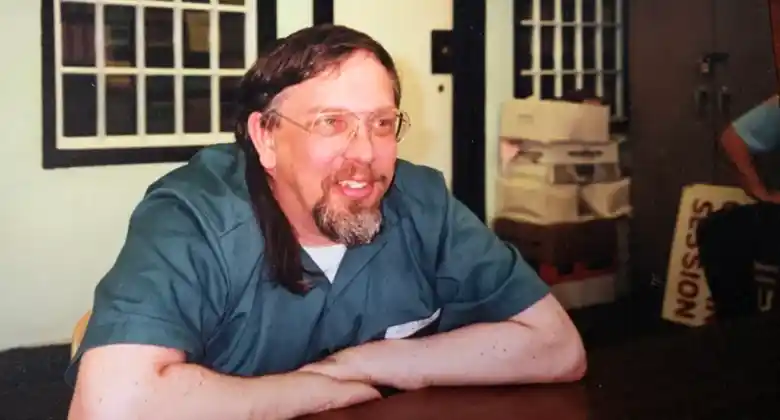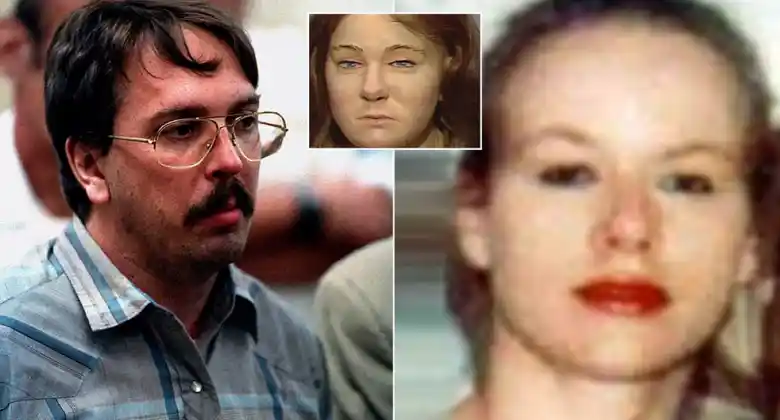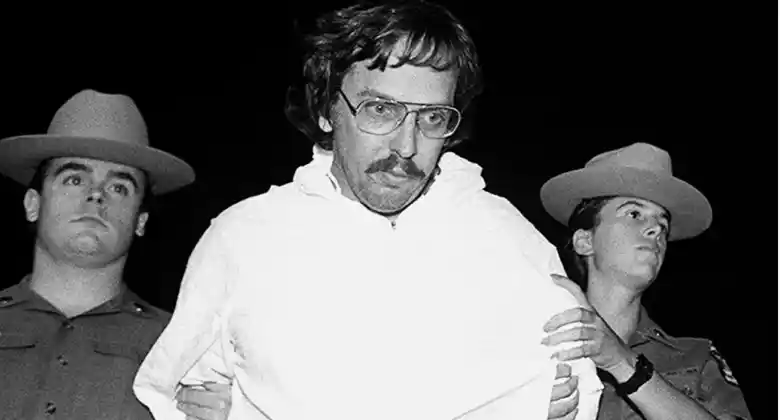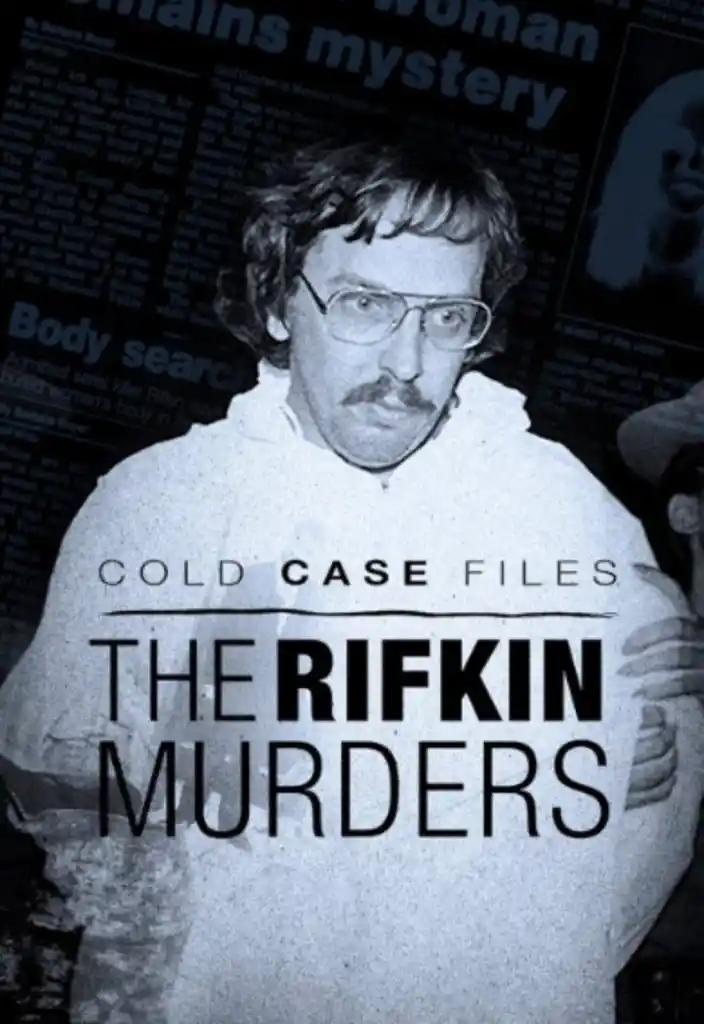Joel Rifkin’s life was deeply impacted by living in the shadow of a champion, Joel David Rifkin born in January 20, 1959. He is an American serial killer who was convicted of murdering several women in the late 1980s and early 1990s, though it is believed he killed as many as 17 people. His story serves as a chilling reminder of how unmet expectations and unresolved psychological issues can lead to tragic outcomes. Joel Rifkin’s story is a haunting reminder that sometimes, the shadows we live in can be darker than we ever imagined—what drives a man to such depths remains a chilling mystery waiting to be unraveled.
Table of Contents
The Unraveling of Joel Rifkin: Living in the Shadow of a Champion
Joel David Rifkin was born on January 20, 1959, in East Meadow, New York, and was subsequently put up for adoption by his birth parents—college students. On February 14, 1959, Joel was adopted by an upper-middle-class Long Island couple. His adoptive father, Benjamin Rifkin, was of Russian Jewish heritage, while his adoptive mother, Jeanne Granelles, was of Spanish descent and converted to Judaism upon marrying Benjamin.

Benjamin had been a celebrated athlete during his college years. He excelled in multiple sports, earning accolades and admiration for his physical prowess and competitive spirit. His athletic achievements were a source of his immense pride, and he carried the memories of his glory days like treasured trophies.
However, his athletic success created a daunting shadow for Joel to live under as it became clear that he did not inherit his father’s athletic abilities. He was not naturally gifted in sports, and his struggles with coordination and motor skills made it difficult for him to excel in physical activities.
Benjamin, perhaps subconsciously seeking a vicarious continuation of his own athletic legacy, pushed Joel to participate in sports. He enrolled him in Little League baseball and encouraged him to try out for the school’s football team. But despite his best efforts, Joel consistently fell short—often the last one picked for teams because of his sloping posture and slow gait, making him the benchwarmer who rarely saw any playing time.
Joel’s lack of athletic ability became a source of disappointment and frustration for Benjamin. He struggled to understand why his son couldn’t replicate his own success, and his frustration often manifested itself in subtle criticisms and veiled disapproval. Joel was acutely aware of his father’s disappointment, internalizing these feelings, further eroding his fragile self-esteem.
The pressure to live up to Benjamin’s athletic legacy weighed heavily on him, feeling like a failure, a disappointment to the man he admired most. This sense of inadequacy, coupled with his social isolation and learning difficulties, contributed to his growing resentment and anger towards the world.
In the end, Joel’s inability to meet his father’s expectations became a brick in the wall of isolation and despair surrounding him. It was a constant reminder of his perceived shortcomings, a source of shame and frustration that fueled his descent into darkness. The athletic chasm between father and son would forever remain a painful reminder of the unattainable ideal that Joel could never reach.
Despite his quiet demeanor and unassuming life, Joel Rifkin, later infamously dubbed “Joel the Ripper,” shocked the world with a series of brutal crimes that seemed to stem from the deep-seated insecurities of living in the shadow of a champion. Joel Rifkin earned the nickname “Joel the Ripper” due to the brutal nature of his crimes, drawing a grim comparison to the infamous Jack the Ripper.
A Troubled Childhood, Isolation, and the Path to Becoming a Serial Killer Rifkin
Joel’s early life was marked by a series of challenges that would shape his troubled path. From a young age, he struggled with undiagnosed learning disabilities, making it difficult for him to keep up with his peers in school. Despite having an IQ of 128, he suffered from undiagnosed dyslexia, making traditional learning a constant struggle.
The cruelty of the children was unrelenting for young Joel, becoming a defining feature of his formative years. His learning disabilities made him an easy target for bullies, who mocked his struggles and made him the butt of their jokes. The taunts and teasing echoed through the hallways and playgrounds, leaving Joel feeling ostracized and alone.
Each day, Joel faced a barrage of insults and physical intimidation. He was excluded from games and social activities, left to wander the fringes of the schoolyard, a solitary figure in a sea of laughter and camaraderie. The pain of rejection and humiliation gnawed at him, eroding his self-esteem and reinforcing his sense of being different—of not belonging. The bullying and ostracism left deep scars on Joel’s psyche as he began to internalize the negative messages he received, believing himself to be unworthy and unlovable. His confidence dwindled, replaced by a deep-seated insecurity that would haunt him throughout his life.
As he grew older, the bullying continued, morphing into more subtle forms of exclusion and ridicule. He was never invited to parties or social gatherings, and his attempts to connect with his peers were often met with indifference or outright rejection. The long-term effects of the bullying and ostracism were devastating as Joel’s social anxiety intensified, making it increasingly difficult for him to interact with others.
His descent into madness was gradual, a slow and insidious process that went unnoticed by those around him. The seemingly ordinary man who lived a quiet life in suburbia, harbored a dark secret that would soon shock the world. The seeds of evil had been planted in his troubled childhood joel rifkin, and they would eventually bear their bitter fruit.
Joel Rifkin’s Descent into Darkness: From Outcast to Brewing Evil
Joel’s early attempts at pursuing higher education at Nassau Community College and later at the State University at Brockport ended in failure. He struggled academically and found himself unable to connect with his peers, further deepening his feelings of isolation and inadequacy.
With his dreams of a college degree shattered, Joel returned to Long Island and began working a series of menial jobs—a landscaper, a delivery driver, and a stock clerk, but none of these jobs provided him with any sense of fulfillment or purpose.
During this time, his obsession with violence and pornography intensified as he spent countless hours alone, immersing himself in graphic content that fueled his dark fantasies. A creeping darkness began to twist his perception of women, transforming them into mere objects in his mind, existing solely to fulfill his desires.
The relentless isolation took a heavy toll on Joel, driving him deeper into a dark and twisted realm of his own making, where he indulged in disturbing fantasies. In 1972, after watching Alfred Hitchcock’s film Frenzy hundreds of times, he became consumed by the thought of strangling prostitutes. He even delved into the book on the Green River Killer to glean insights on his killing methods. Joel’s parents ultimately gave him a car, which he began using to seek out prostitutes in nearby Hempstead and later Manhattan.
His fascination with violence took a sinister turn as he began to frequent the red-light districts of New York City, where he would spend significant amounts of money picking up sex workers. Every Friday, he would receive his paycheck, but by Sunday, he’d already blown through it all on prostitutes, leaving him flat broke. He became a sex addict—an insatiable beast, devouring his life and every glimmer of hope for a brighter future. This insidious shift marked his transition from a socially awkward outcast to a man brewing evil within.
The Catalyst: A Father’s Suicide and a Son’s Shattered World
Joel’s existence revolved around gaining his father’s approval, a pursuit he never achieved. Therefore, when Benjamin committed suicide, the doors of Joel’s emotional stability were blown wide open. The foundation on which his self-worth rested crumbled, leaving him adrift in a sea of despair and longing.
As his mother aged and focused on her own life, he found himself with newfound freedom. He continued seeking solace in the company of prostitutes, spending all his money to feel a semblance of control and superiority. Yet, beneath the facade, he harbored a deep self-loathing and disgust for his addiction.
In the fleeting moments with these women, Joel felt a twisted sense of power, viewing them with disdain and disrespect. Night after night, he cruised the streets, desperately seeking connection in all the wrong places. By his own admission, he had been with 300 to 350 prostitutes, each encounter a desperate attempt to fill the void within.
In early 1989, the darkness that had been brewing inside Joel finally reached a boiling point as his fantasies, long suppressed, clawed their way to the surface, demanding to be realized. The stage was set for a horrifying transformation, as Joel would soon become one of America’s most notorious serial killers.
A Grim Beginning: The First Victim of Joel Rifkin

In 1989, Joel established a landscaping business, which tragically became instrumental in his crimes. He used his company’s rented property as a temporary burial site for some of his victims, concealing their bodies amidst the tools and equipment. This allowed him to delay disposing of the remains, buying him time to plan their disposal in remote locations around New York City.
In the late hours of March 4, 1989, he picked up a prostitute named Heidi “Susie” Balch for a simple, fleeting moment to satisfy his twisted desires. But as morning broke, Susie demanded payment, sending a surge of anger coursing through Joel. The fear of exposure, the vulnerability of the situation triggered a fit of rage as he repeatedly bludgeoned her in the head with a Howitzer artillery shell, ultimately strangling her to death.
The weight of his actions pressed down on him, yet he was trapped in a cycle of denial and panic. Finally, he dismembered the corpse with an X-acto knife, severing her fingertips and removing her teeth with pliers to hide her identity. He placed her head in an old paint can, stuffing her body parts into garbage bags, ultimately dumping her head and legs in the woods of the Hopewell Valley Golf Club and tossing her arms and torso into the East River.
Despite his efforts to hide the body, a member of the golf club found the can containing Susie’s head several days later. A chill was sent down Joel’s spine after learning that Susie had been discovered. The dread of getting caught consumed him, igniting a flicker of remorse. In that moment, he swore to never take another life. The thought of prison, of the world knowing his dark secret, was enough to scare him into temporary restraint.
But weeks turned into months, and she remained unidentified. Joel watched the reports with a mix of relief and growing unease as he had evaded capture, but the knowledge that Susie’s identity remained a mystery haunted him.
Unbeknownst to him, this would be the beginning of a gruesome pattern. The temporary restraint he had imposed upon himself had shattered, replaced by an insatiable hunger that would drive him to commit unspeakable acts of violence. The cycle of murder, remorse, and the desperate need to conceal his crimes would become a chilling routine, leaving a trail of victims in its wake.
The Unbreakable Cycle: The Murder of Julie Blackbird
Eighteen months passed, and Joel managed to keep his promise, but the urges, the darkness that lurked within, never truly faded. It lay dormant, a predator waiting for the right moment to strike. 23-year-old Julie Blackbird was a sex worker struggling to make ends meet who had unknowingly crossed paths with a man whose name would soon become synonymous with terror: Joel Rifkin.

Lured by a promise of a safe haven and drugs, Julie agreed to accompany Joel to his home in East Meadow, New York. Unbeknownst to her, his mother was away, leaving them alone in a place that would soon become a scene of unspeakable horror. After a night fueled by sex and drugs, Julie became exhausted and vulnerable, drifting off to sleep—enraging Joel. Her lack of responsiveness drove a twisted need for control and attention.
When she awoke seeking more drugs, this only further infuriated him, prompting him to retrieve an object and beat her in the head with it, ultimately strangling her to death. Just like many women before her, Julie was decapitated, and her body was dismembered—thrown into the East River and Brooklyn canal.
The discovery of her legs sent shockwaves through the community, but the full extent of Joel’s depravity was yet to be revealed. As investigators delved into the case, they would uncover a trail of horror that would span years and claim the lives of numerous other vulnerable women.
Joel Rifkin’s Modus Operandi: A Pattern of Deception and Brutality
Joel’s modus operandi was a chilling combination of deception, brutality, and a calculated effort to evade detection. He primarily targeted vulnerable women, often sex workers or those struggling with addiction, who were less likely to be immediately missed or reported missing.
He would typically approach his victims in his vehicle, often offering them money for sex or a ride. Once inside his truck or van, he would overpower them, often strangling them to death. The brutality of his attacks was evident in the injuries sustained by his victims, which often included blunt force trauma and strangulation marks.
After the murders, he would meticulously dispose of the bodies, often transporting them to remote locations in his vehicle. He would sometimes dismember the bodies or wrap them in materials like carpets or tarps to conceal them. The locations where he dumped the bodies varied widely, ranging from wooded areas, industrial sites to rivers and canals, making it difficult for investigators to establish a pattern initially.
Joel’s efforts to evade detection were notable as he would often remove identifying features from his victims, such as fingertips or teeth, to hinder identification. He would also clean his vehicle thoroughly after each murder, attempting to erase any trace of his crimes. The quiet, unassuming man had transformed into a monster, his actions sending shockwaves through the city and exposing the dark underbelly of society.
Concrete Tomb: The Mystery of the Lady in the River
In the Fall of 1990, the familiar pull grew stronger, until it was an irresistible force, prompting him to pick up a prostitute and bring her to his house. After a night of sex, Joel became angry after she requested payment and in a fit of rage, he bashed her head in with a table leg. He spent two days with her lifeless body before decapitating and dismembering her—wrapping her body in a tarp, and encasing her head in cement, ultimately discarding it in the murky waters of the East River.
A fisherman was casting his line early one morning when he snagged something—reeled it in and the horror unfolded before his eyes—a human head, encased in concrete. The discovery sent shockwaves through the police department. The head was meticulously cleaned, the features intact, but the identity of the victim remained a chilling mystery. The detectives, hardened by years of investigating violent crimes, were nonetheless shaken by the brutality and calculated nature of this act.
A team of forensic experts worked tirelessly to extract any clues from the remains. They carefully chipped away the concrete, revealing a woman’s face, her eyes closed as if in eternal sleep. The victim was young, her expression peaceful, belying the violence that had ended her life.
In a desperate attempt to identify the woman, the police turned to cutting-edge technology, using the latest facial reconstruction techniques. They created a lifelike image of what she might have looked like, broadcasting it on the news, plastering on billboards, and sharing across social media.
The public’s response was overwhelming as tips poured in, each one offering a glimmer of hope. Yet, despite the extensive media coverage and the tireless efforts of the police, the woman’s identity remained elusive. She became known as the “Lady in the River,” a haunting symbol of the city’s dark underbelly.
The investigation continued, but the leads grew cold. The police never gave up hope of identifying her and bringing her killer to justice, but the case gradually faded from the headlines, leaving behind a lingering sense of unease and a haunting question that would remain unanswered for years to come.
The Night of Unthinkable Brutality: The Murder of Leah Evens and Tiffany Bresciani
On the cold night of March 14th, 1992, a bone-chilling frost clung to the grimy windows of Joel’s weathered van as he cruised the dimly lit streets of New York City. Inside the van, his eyes, cold and calculating, scanned the desolate sidewalks for his next prey. It was here, amidst the neon signs and the flickering streetlights, that he encountered Leah Evens.
She was a young woman ravaged by the demons of addiction, standing shivering on a street corner. As Joel’s van slowed to a stop beside her, she hesitated for a moment. With a trembling hand, she opened the van door and climbed inside. Unbeknownst to her, she had just sealed her fate. The van’s interior was a dimly lit chamber of horrors, a macabre sanctuary where Joel indulged his darkest fantasies. As the van pulled away from the curb and disappeared into the night, Leah could not have known she would experience the most brutal form of torture, rape, and violence.
In the days and weeks that followed, her disappearance was noticed by her loved ones and the authorities who eventually made a grim discovery. Leah’s body was found in a wooded area, a devastating conclusion to the search for the missing young woman.
Then in June 1993, Tiffany Bresciani, a 22-year-old woman from Manhattan, found herself struggling to make ends meet and turned to sex work for survival. However, her life was tragically cut short when she crossed paths with Joel. He had already murdered numerous women by this point, encountering Tiffany on Allen Street in Manhattan, where she was working.

Lured into his pickup truck with the promise of money, Tiffany unknowingly sealed her fate. His dark compulsions took over, and he brutally murdered her in a parking lot, adding another name to his grim list of victims. He concealed her body in his garage until he could determine how to dispose of her. Tiffany’s disappearance was met with confusion and worry from her friends and family, sparking an investigation into her disappearance.
Unmasking a Monster: The Capture and Conviction of Joel Rifkin (1993)
The disappearance of Leah Evens, Tiffany Bresciani, and other young women in New York City sparked growing concern among law enforcement and the public. The similarities in the cases, particularly the victims’ backgrounds and the circumstances of their disappearances, raised suspicions of a serial predator operating in the shadows.
Then on a seemingly ordinary day, state troopers on Long Island noticed Joel’s pickup truck was missing a license plate. As they attempted to pull him over, Joel panicked, leading them on a high-speed chase through the suburban streets. The pursuit ended abruptly when he crashed his truck, ironically in front of the courthouse he’d eventually be tried at, bringing his reckless flight to an end.
As officers approached the damaged vehicle, a foul odor wafted through the air, a grim harbinger of the horror that awaited them: the body of Tiffany Bresciani concealed beneath a tarp. The horrific sight sent shockwaves through the law enforcement community and marked a turning point in the investigation.
The discovery of Tiffany’s body provided investigators with crucial evidence linking Joel to the string of disappearances. With a renewed sense of urgency, they delved deeper into his past, meticulously piecing together the puzzle of his crimes. As the investigation progressed, a chilling portrait of a predator emerged, a man who preyed on vulnerable women, his actions driven by a dark and twisted desire.
Joel’s apprehension and the discovery of Tiffany’s body sent shockwaves through the city and the nation. The sheer brutality of his crimes and the number of victims were chilling. He was charged with multiple counts of murder and faced a lengthy trial.
Joel Rifkin’s Trial and Sentencing: A Reckoning for Heinous Crimes
In 1994, Joel faced a series of trials for his heinous crimes against numerous women. The trials were marked by intense media scrutiny and public outrage, as the details of his chilling murders were revealed.

Prosecutors presented overwhelming evidence against him, including the discovery of victims’ bodies, forensic evidence linking him to the crimes, and incriminating statements he had made to the police, including:
I killed prostitutes because they had no one. They had no lasting relationships. No family who cared. No one would ever come looking for them.
The defense, on the other hand, attempted to portray Joel as mentally unstable, hoping to mitigate his culpability. The first trial, held in Nassau County, focused on the murder of Tiffany Bresciani. Joel showed no remorse and even dozed off during the prosecutor’s opening statement. The jury, after hearing the gruesome details of the case and considering the evidence presented, found Joel guilty of second-degree murder. He was sentenced to 25 years to life in prison for this crime alone.
Subsequent trials in other jurisdictions resulted in more convictions for him as he pled guilty to two additional murders in Suffolk County and another in Queens County. These guilty pleas were part of a deal to avoid the death penalty, which was still in effect in New York State at the time.
In total, he was convicted of nine murders and sentenced to a cumulative total of 203 years to life in prison. His sentencing marked the end of a long and arduous legal process, but it also brought a sense of closure to the families of the victims who had suffered unimaginable loss. Joel’s trial and sentencing were a landmark moment in New York’s legal history.
Joel Rifkin vs. Ferguson: A Jailhouse Scuffle and the Isolation Aftermath
In early 1994, a jailhouse brawl erupted between serial killer Joel Rifkin and mass murderer Colin Ferguson. The altercation was sparked by Colin’s request for quiet while using a prison phone. According to the New York Daily News, the fight escalated as Colin taunted Joel, saying:
I killed 6 devils and you only killed women,” to which Rifkin retorted, “Yeah, but I had more victims.” Ferguson then struck Rifkin.
Due to Joel’s notoriety, prison officials deemed his presence in the general population potentially disruptive. In 1996, he was confined to his cell at Attica Correctional Facility for 23 hours a day, spending over four years in solitary confinement before being transferred to Clinton Correctional Facility.
Joel filed a lawsuit, claiming his isolation violated his constitutional rights, however, a state appellate court ruled in 2000 that his rights were not infringed upon. His lawsuit sought $50,000 for each day in solitary, totaling $77 million, which, if awarded, would have mostly gone to his victims’ families under state laws. Currently, Joel is reportedly housed with over 200 other inmates at Clinton, all segregated from the general prison population.
Evil Legacy: A Cycle of Darkness in Joel Rifkin
The story of Joel Rifkin is a chilling reminder of the darkness that can reside within the human soul. It is a tale of a man trapped in a cycle of violence, unable to break free from the urges that consumed him. Despite the fear and remorse that occasionally surfaced, the pull of his dark desires proved to be too strong, leading him down a path of destruction that would forever mark him as one of history’s most notorious serial killers.
Similar ” kidnapping ”
- Can You Use a Gun to Stop a Kidnapping?
- Cherish Perrywinkle: Kidnapped from Walmart and Murdered
- Junko Furuta: A Shocking Tale of Suffering and Justice
- Medical Kidnapping – A Hidden Crisis in Healthcare
Read “Joel Rifkin: The Horrifying & True Story of Joel The Ripper”

Joel Rifkin: The True Story of the Most Prolific Serial Killer in New York History by Jack Rosewood This book offers a detailed look into the life and crimes of Joel Rifkin, exploring his troubled past and the factors that contributed to his horrific actions.
Watch “Cold Case Files: The Rifkin Murders”

“Cold Case Files: The Rifkin Murders” documents the ongoing New York State Police investigation into the two remaining unidentified victims of Joel Rifkin, New York’s most prolific serial killer.
FAQs
What is the connection between Joel Rifkin and a champion?
Joel Rifkin lived in the shadow of his uncle, an Olympic champion, whose success created high expectations within the family, contributing to Joel’s feelings of inadequacy.
Did joel rifkin get married?
No, Joel Rifkin never got married. He spent much of his adult life leading a troubled and isolated existence, which culminated in his criminal activities.
What is Joel Rifkin’s current status?
Joel Rifkin is currently serving a life sentence without the possibility of parole for his crimes.
How did Joel Rifkin get caught?
Joel Rifkin was apprehended by the police in 1993 after being stopped for a traffic violation, which led to the discovery of a body in his vehicle.
What can we learn from Joel Rifkin’s story?
Joel Rifkin’s story underscores the dangers of unmet expectations, unresolved psychological issues, and the importance of mental health support in preventing tragic outcomes.